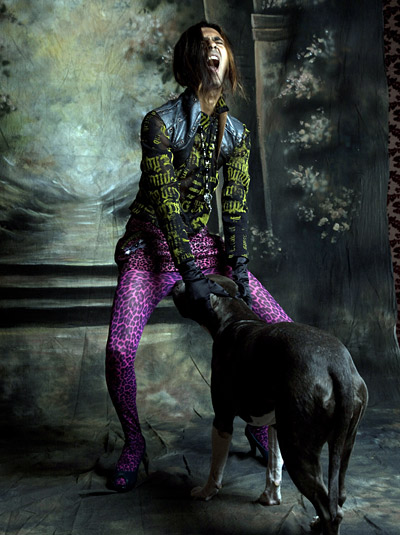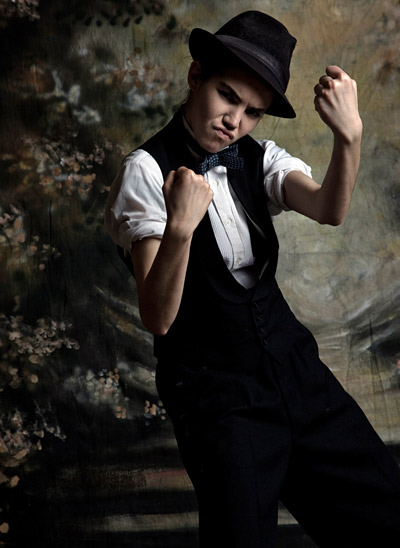Jo Boobs Teaches the Va-Va Voom!
Film courtesy of Syndicate of Human Image Traffickers.
All but her belly buried in the floor;
And the lewd trounce of a final muted beat!
We flee her spasm through a fleshless door…
Then you, the burlesque of our lust — and faith,
Lug us back lifeward — bone by infant bone.
— Hart Crane, “National Winter Garden,” (1930)
“Jo Boobs” Weldon is Headmistress of The New York School of Burlesque, whose home at The Slipper Room is just a few blocks from where Lydia Thompson’s “London Blondes” brought burlesque to America and a stone’s throw from where Minsky’s original National Winter Garden made burlesque part of the American vernacular. Minsky’s notoriously established Gypsy Rose Lee as an icon synonymous with striptease, and launched the careers of Abbott and Costello, Phil Silvers and Robert Alda before being closed in the name of public morality.

Houston Street Burlesque by Mabel Dwight (1928)
Is burlesque – a word which refers to turning things upside down – still able to subvert morals and mores? In a popular culture where the use of sexuality to sell consumer goods is banal, pornography of nearly every stripe is freely and instantly available, and sympathetic gay and lesbian characters are commonplace, is the self-conscious performance of gender merely campy fun or does it still have a liberating capacity? Can sex work, titillation, gender play and masturbation undermine heterosexual monogamy? Whose moralities and identities might they challenge?
Catherine MacKinnon argues that sexualized depictions of women in patriarchal societies reinforce misogyny to the point of constituting a form of violence. Do sexualized performances by women lead to their individual and collective debasement? Is stripping a phenomenon where women who appeal most to men are degraded whereas burlesque liberates women who stand outside the norms of beauty as prescribed by male desire? Considering stripping and prostitution, I ask whether everyone sells their bodies at every job? Further, when men pay a high premium to be with a woman or just to look at one, whose body is exploited? More specifically, does it make sense to import 20th century standards of judgment to a 21st century United States whose educational system produces more female post-graduates than male and whose career women earn 94.2% of the income of their male counterparts? Despite shifts in income and status, why do so few straight males study burlesque or work as strippers?

Jo Boobs and I met at the basement headquarters of her school on the coldest evening in recent years to explore questions of gender, activism, and whether she and her ilk are gender traitors or gender busters. She even stripped down to fighting gear for an intimate performance caught by our unblinking digital eyeball. (See above!) In June 2010, Jo will publish The Pocket Book of Burlesque (with a forward by Margaret Cho), a volume whose slender design can slip under the inspector’s prying gaze. The New York School of Burlesque is in sympathetic affiliation with Miss Indigo Blue’s Academy of Burlesque in Seattle and Michelle L’Amour’s Burlesque Finishing School in Chicago as well as programs in Washington, D.C and elsewhere. When will someone open a campus in Tehran?
COILHOUSE: How does burlesque differ from stripping?
JO BOOBS: To understand the difference, look at it from the audience’s point of view. If someone goes to a strip joint, they usually go in whenever they want, they pick the performer they want, they negotiate how they interact with them, they interact one-on-one, and they leave. When they go to a burlesque show, the show starts at a [predetermined] time, they pay a cover (not the performers), they watch the show, there isn’t usually any one-on-one interaction, and they leave when the performance is over.









